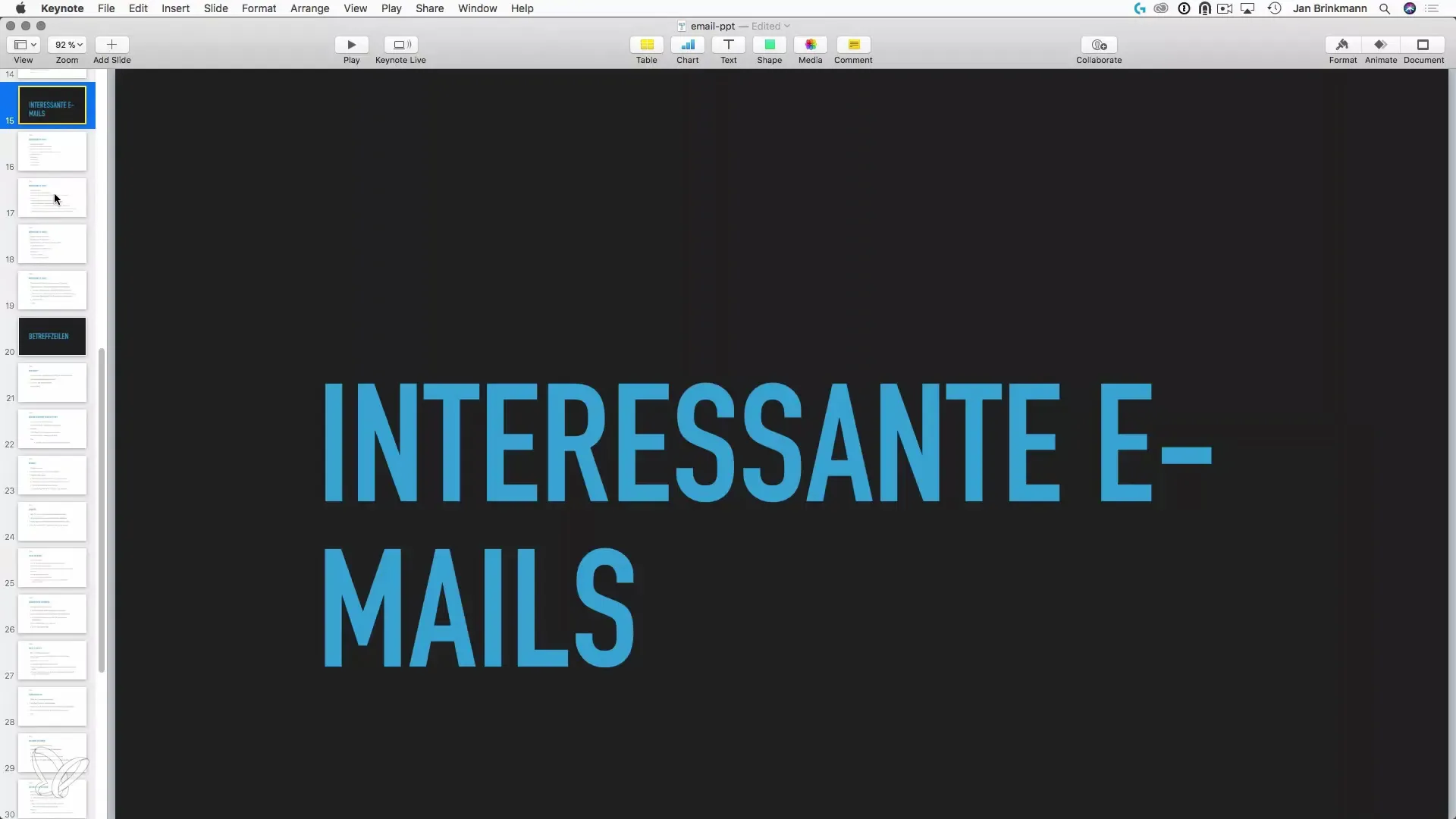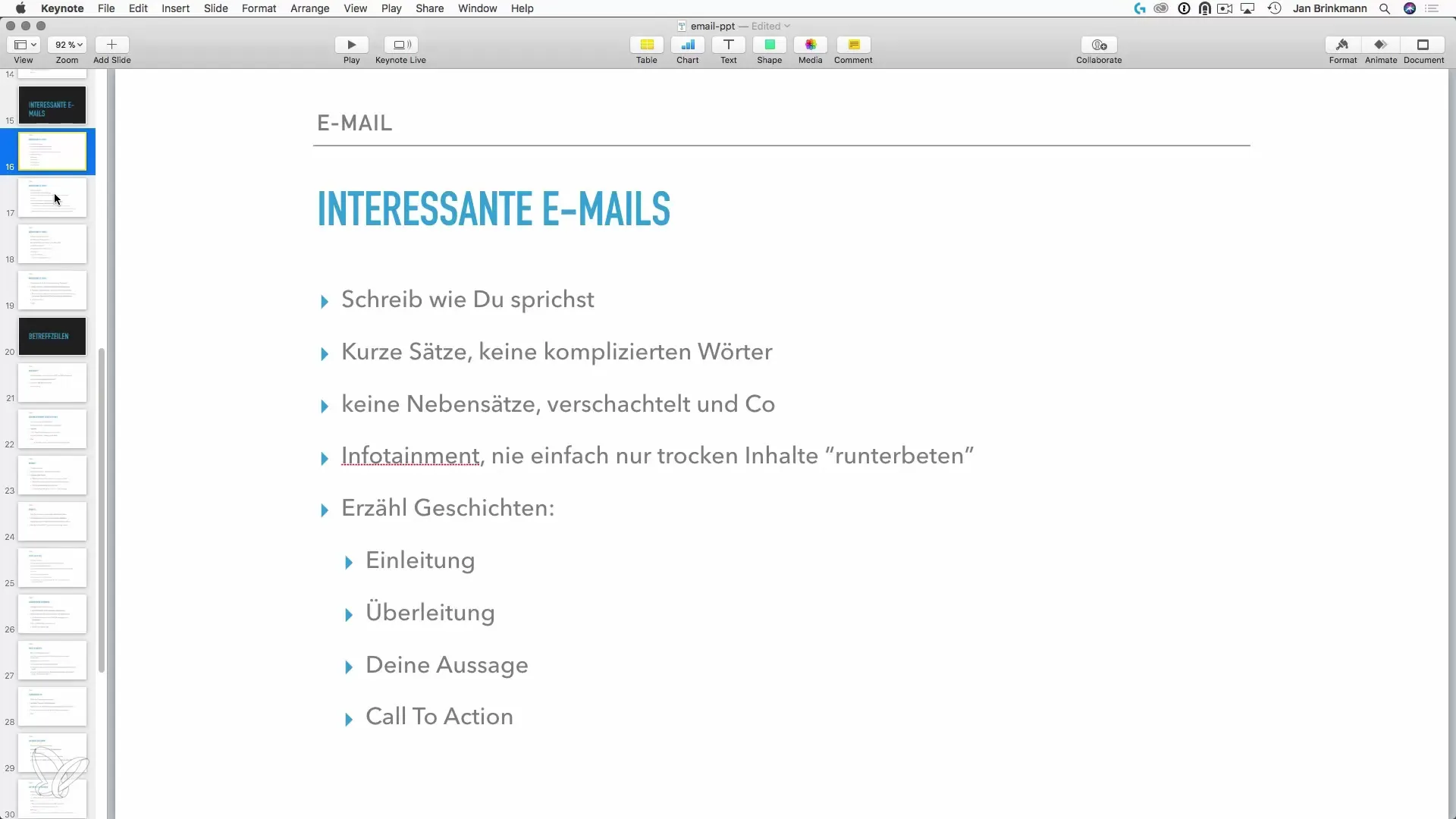E-mails are more than just messages in a digital mailbox. They are a crucial tool to connect with potential customers and spark their interest. To achieve a positive response, it is important to strike the right tone and make the content engaging. In this guide, you will learn what makes an interesting email and receive practical tips for creating emails that are read and appreciated.
Key Insights A simple, clear writing style, emotional appeal through storytelling, and visual structure help to engage your readers and motivate them to take action.
Step-by-Step Guide
1. Write as You Speak
The first step to an interesting email is to communicate authentically. Many people tend to over-polish their messages by using complicated words or phrases. Instead, you should write as you speak. This makes your messages more tangible and accessible for your readers. Start with a rough draft and then revise it without making it unnecessarily complicated.

2. Avoid Fillers
Fillers add no value and make texts clumsy. Make sure to use precise and simple expressions that get straight to the point. Instead of saying "to secure the door," you could say "to slam the door." Such concise formulations enliven your text and make it feel more vivid.

3. Short Sentences
Keep your sentences short! Long and complex sentences are not only harder to understand, but they also lower your readers' attention. Ideal sentences contain 10 to 15 words. This type of structuring helps your readers process the information more quickly.
4. Simplicity is Key
Avoid using complex terms or scientific phrasing. The style of children's literature at a fourth to sixth-grade level is a good indicator that you are in the right ballpark. Keep your text easy to understand so that it remains appealing to readers without expert knowledge.
5. Emotional Storytelling
Use emotional stories to create a connection with your reader. A good email should begin with a brief introduction that describes a scene or situation to create images in the reader's mind. Use stories to emphasize key points and evoke emotions.
6. The Call-to-Action (CTA)
After the emotional appeal comes the Call-to-Action – the point at which you ask the reader to take a specific action. This action could be booking a course, downloading an e-book, or registering for a webinar. The CTA should be clear and unambiguous, so the reader knows what to do.
7. The Structure of Your Email
The structure of your email is also crucial. Start with a strong opening, followed by a reference to the target audience, then the challenge or problem you are solving. End with a solution and the Call-to-Action. If you do this skillfully, the email will be much more engaging and encourage readers to keep reading and take action.
8. Inspiring Stories
Share inspiring stories that resonate with your target audience. This could be a narrative about personal challenges or success stories from others. Such stories often have a significant impact and can amplify your message.
9. Diversity of Topics
Emails can come from a variety of topics. Consider what everyday situations you can incorporate into your emails to draw analogies to your field. This not only helps illustrate your message but also makes the emails more varied.
10. Controversy and Charity
You can also express controversial opinions to spark discussions or support charity initiatives to reach your readers emotionally. It is important to remain authentic and choose topics that genuinely move you.
Summary – Writing Interesting Emails: The Key to Successful Customer Acquisition
Creating engaging and well-written emails requires practice and sensitivity. By writing authentically, telling emotional stories, and maintaining a clear structure, you will be able to spark your readers' interest and motivate them to respond to your offerings. Experiment with different ideas and stay committed.
Frequently Asked Questions
How should I correctly structure emails?Begin with a strong introduction, followed by the presentation of the problem and the solution, and conclude with a clear Call-to-Action.
What can I do about filler words?Avoid using unnecessary words that do not contribute to your text’s message, and instead use concise formulations.
How can I find inspiring stories for my emails?Make sure to utilize everyday situations that establish a connection to your field, or share success stories that resonate with your target audience.
Why are short sentences important?Short sentences are easier to understand and help your reader process the information quickly, which keeps attention higher.
How often can I address controversial topics?Controversial topics should be used thoughtfully. It is important that they are relevant and in the right context to spark interest and not alienate.


